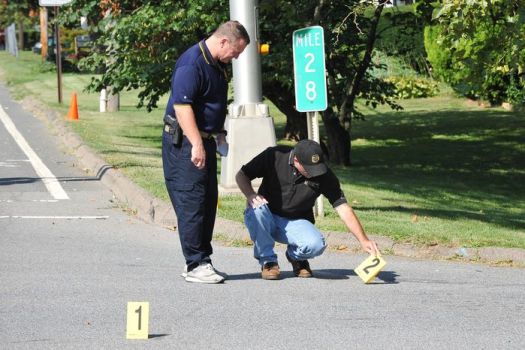Cities that prioritize parking and roads for automotive traffic have bought into the hype. It’s the influence of the addiction, and it’s especially hard to break an addiction when the addicts don’t know, or are unwilling to admit that they’re addicted.
The 3 leading causes of death in the US, guns, opioids, and car crash fatalities. The industries are profiting, and they’re killing us in almost equal numbers by keeping us addicted.
The auto and oil and gas industries cleverly, and creatively keep us addicted to cars, even though they’re literally killing us: 2018 was the third consecutive year of at least 40,000 motor vehicle deaths.
Pharma succeeded in getting and keeping people addicted to opiods, which were involved in 47,600 overdose deaths in 2017, just slightly higher than car related deaths, and now drug companies are profiting from the drugs that treat opioid addiction.
Americans are addicted to their guns too, and that’s the way the industry likes it, even though 39,773 people died from gun-related injuries in the U.S., according to the CDC. just slightly less than deaths by car.
One way that the media has bought into the hype is putting the onus for safety on people riding bikes and scooters, which is focusing entirely on the wrong problem. #toomanycars #slowthecars
Asbury Park Complete Streets Coalition works to address the health, economic, and equity of transportation options in our city.
The truly most dangerous activity :
“…separates white from black, rich from poor, healthy from sick…when you cram yourself into a little steel box. The structure is designed to keep you emotionally and financially enslaved to your car…”
THE MOST DANGEROUS ACTIVITY

Another reason it’s popular to talk about the dangers of cycling is that talking about the dangers of cycling discourages people from cycling. American society doesn’t want YOU on a bike. If YOU start riding, you will drive less. If you drive less, you’ll contribute less to the structure we live in, which is built around driving.
Read this blog post by Seth Davidson, a long-time bicycle rider, advocate, and cycling lawyer. He’s often snarkily humorous, but this time he’s deadly serious:
The most dangerous activity





















New Jersey has the second-highest amount of uncommitted federal transportation dollars in the nation, and it consistently ranks among the worst when it comes to spending a specific type of transportation funds — Transportation Alternatives, which is intended to fund trails, walking, and biking projects.
At the same time New Jersey has a backlog of transportation dollars to spend, it has an enormous bicycle and pedestrian safety problem. As of Dec. 9, 2019, at least 165 people have been killed this year while walking or bicycling on New Jersey’s roads. In 2018, New Jersey State Police reported that bicyclists and pedestrians comprised 34% of the state’s crash fatalities — the second deadliest year for walkers and bikers on record. The deadliest year was in 2017.
Read more…
https://www.nj.com/opinion/2019/12/dozens-are-killed-each-year-walking-and-biking-in-nj-we-have-the-cash-to-make-roads-safer-opinion.html?fbclid=IwAR20L1WLdGy92nbip0OWW9rWj91zCvWQ0R5jgzHqlyuZ0bL6QR3UG-5Nyx0